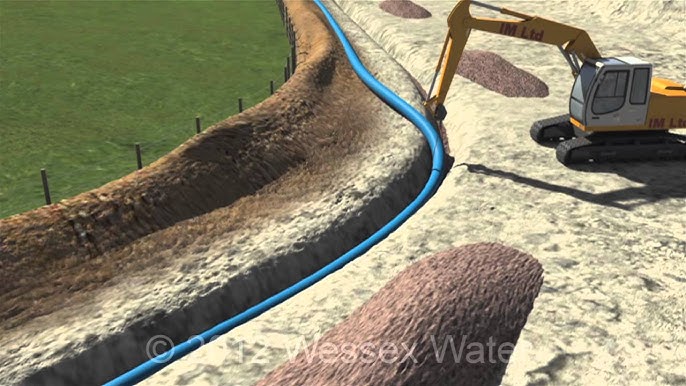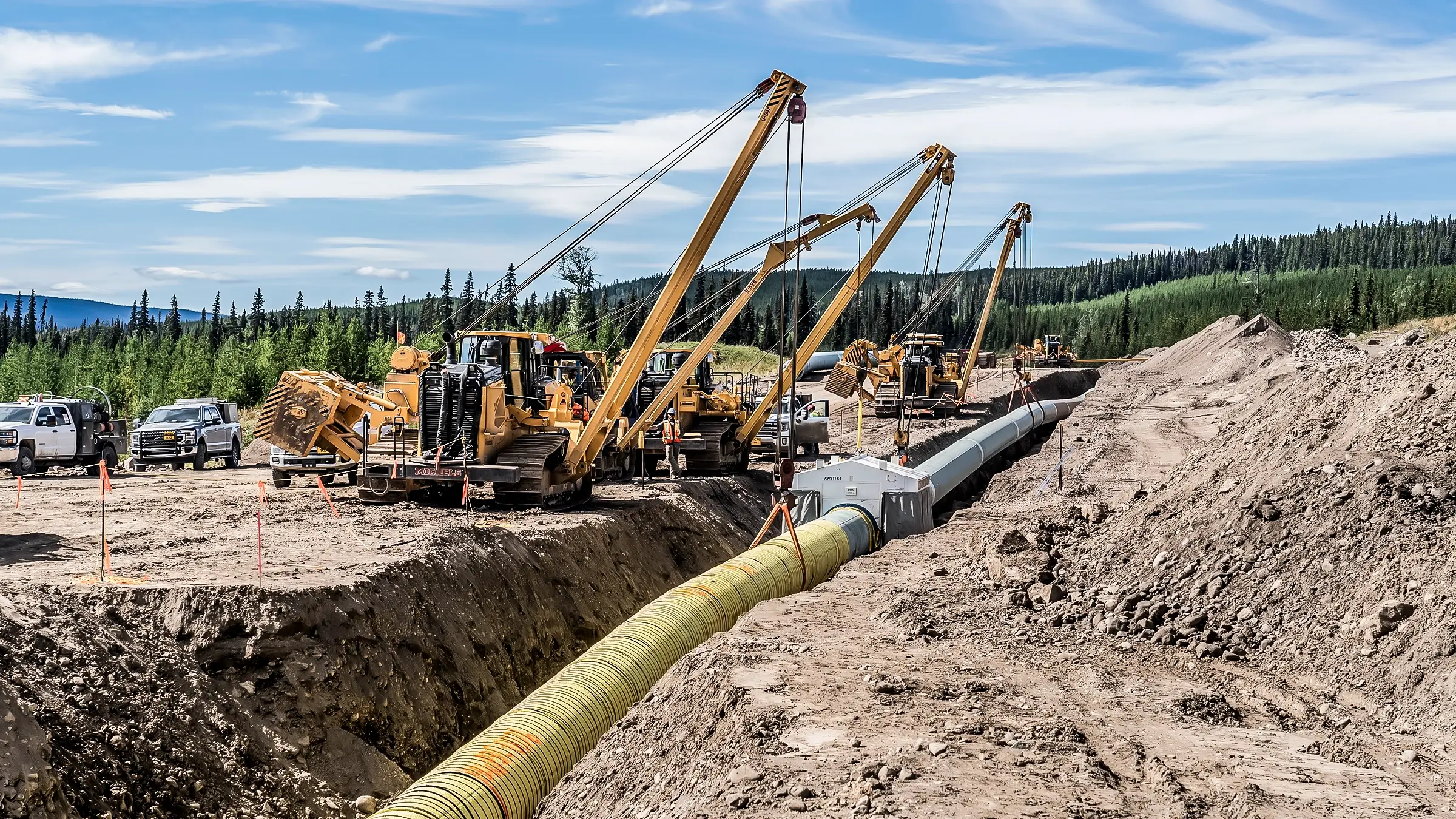Midland pipeline construction company: How design choices affect project success
Recognizing the Trick Functions of Pipeline Providers and Their Influence On Performance
Pipeline services play a vital function in various markets, influencing functional efficiency noticeably. Secret functions, such as innovative tracking technologies and maintenance approaches, are important for lessening downtime. Additionally, regulative compliance warranties security and environmental management. The interplay in between layout, facilities, and economic aspects can make complex these processes. Recognizing how these aspects impact general effectiveness increases vital questions about ideal methods and future growths in the field.
The Function of Technology in Pipeline Tracking
As improvements in modern technology remain to evolve, the significance of efficient pipeline tracking has become increasingly apparent. Modern pipeline systems depend on sophisticated monitoring tools that improve operational efficiency and security. Technologies such as real-time information analytics, sensing units, and drones offer operators with prompt understandings into pipe problems, allowing them to detect leaks, deterioration, and other potential concerns before they escalate right into considerable issues.
The integration of Internet of Points (IoT) tools has actually transformed standard surveillance approaches, allowing for continuous security and automated reporting. This aggressive approach not just decreases risks but likewise maximizes maintenance routines and source allocation. In addition, advanced software application platforms facilitate information visualization and analysis, encouraging decision-makers to react swiftly to abnormalities. Jointly, these technical developments not only enhance pipe honesty however likewise foster environmental stewardship by mitigating the potential effect of leakages and spills.
Maintenance Methods for Boosted Efficiency
Effective upkeep methods are crucial for maximizing pipe efficiency. Applying anticipating maintenance strategies, sticking to routine evaluation methods, and creating robust emergency feedback strategies can significantly improve operational dependability. These approaches not just reduce downtime however likewise add to the overall security and integrity of pipeline systems.
Predictive Maintenance Methods
Predictive maintenance strategies are significantly acknowledged for their capacity to improve functional performance in pipeline solutions. By leveraging data analytics and checking modern technologies, these techniques allow operators to prepare for tools failures before they happen. This aggressive method minimizes unexpected downtime, reduces maintenance expenses, and expands the life-span of important assets. Sensing units and IoT devices play a critical role in gathering real-time data, permitting for the analysis of tools health and wellness and performance patterns. Artificial intelligence algorithms assess this data to identify patterns and anticipate potential concerns. As a result, pipe drivers can set up maintenance activities throughout non-peak times, enhancing resource allocation and making sure constant operation. Eventually, the adoption of predictive maintenance promotes an extra reliable and efficient pipe infrastructure.

Routine Examination Protocols
Routine examination protocols act as a cornerstone of maintenance strategies targeted at enhancing efficiency in pipeline procedures - Midland oilfield pipeline services. These procedures entail systematic evaluations of pipeline honesty, concentrating on finding potential concerns before they rise. Normal inspections generally include aesthetic analyses, leakage detection innovations, and pressure monitoring to guarantee peak efficiency. By sticking to well established routines, operators can identify corrosion, material wear, or blockage, consequently reducing downtime and repair service expenses. Additionally, information accumulated throughout inspections can inform predictive maintenance initiatives, permitting for a proactive strategy to pipe administration. Inevitably, regular examinations not just prolong the life expectancy of pipeline framework however likewise contribute to safer and more dependable transportation of sources, strengthening general operational performance
Emergency Situation Action Preparation
Emergency situation feedback planning is important for maintaining performance in pipeline operations, making certain that operators are prepared to address unforeseen cases promptly and successfully. A well-structured emergency situation action plan includes clear procedures, assigned roles, and communication approaches to mitigate threats connected with pipe failings. Regular drills and training improve group preparedness and familiarize workers with emergency situation procedures. Furthermore, having conveniently available sources, such as spill containment tools and emergency get in touch with lists, can considerably minimize action times. By integrating real-time surveillance modern technologies, operators can swiftly identify and respond to concerns, reducing environmental influence and operational downtime. Inevitably, a complete emergency situation response plan not just safeguards properties and workers but additionally enhances the overall effectiveness of pipeline solutions.
Governing Conformity and Safety Specifications
Governing conformity and security requirements play an essential role in the pipeline services sector. Creek Pipe local contractor. Sticking to industry policies ensures that firms apply effective safety procedures and risk management approaches. This commitment not just safeguards personnel and the atmosphere but also enhances overall functional performance
Conformity With Sector Rules
Conformity with sector regulations is important for making certain the safety and efficiency of pipeline procedures. Regulative structures, such as those developed by the Environmental Security Agency (EPA) and the Pipeline and Hazardous Materials Safety And Security Administration (PHMSA), set stringent criteria that operators have to abide by. These guidelines cover numerous facets, including pipeline style, building and construction, upkeep, and tracking, guaranteeing that systems run securely and effectively. Non-compliance can cause severe penalties, operational hold-ups, and ecological threats. By adhering to these laws, pipe companies not just safeguard public security and the atmosphere yet also improve their operational effectiveness. Inevitably, regulative conformity fosters depend on amongst stakeholders, making sure that pipe services can operate seamlessly in an affordable landscape while meeting legal obligations.

Security Method Implementation
Reliable safety procedure execution is an read this important part of pipe procedures, closely linked to regulative compliance and security criteria. Sticking to these protocols not only ensures the defense of personnel yet additionally safeguards the atmosphere and infrastructure. A robust security framework includes normal training, comprehensive evaluations, and using ideal safety equipment. Organizations should remain attentive in upgrading their methods to show changes in guidelines and technological developments. Conformity with well-known security requirements reduces the risk of crashes and boosts functional effectiveness. Furthermore, a culture of security fosters worker interaction and accountability, adding to overall business success. Inevitably, effective security method implementation is extremely important in maintaining the stability of pipe solutions and achieving long-lasting sustainability in procedures.
Threat Monitoring Techniques
Applying robust risk administration approaches is critical for guaranteeing that pipeline procedures stick to governing requirements and security criteria. Organizations has to determine potential risks and assess dangers related to pipeline tasks. This includes carrying out complete inspections, using sophisticated monitoring modern technologies, and maintaining compliance with industry guidelines. Regular training for personnel on safety and security procedures enhances situational understanding and prepares teams to react successfully to emergencies. Furthermore, creating backup plans and performing drills can greatly minimize threats. Teaming up with governing bodies ensures alignment with developing safety standards. By focusing on threat administration, pipeline services can boost functional performance while securing both the environment and public security. Ultimately, a proactive method to risk administration cultivates a society of safety within the sector.
Pipeline Style and Facilities Considerations
How can the layout and facilities of pipelines influence overall operational performance? The configuration of pipelines plays a critical function in establishing their effectiveness. Effective style decreases friction losses, therefore lowering power usage during fluid transport. Aspects such as size, material option, and format straight influence circulation prices and maintenance demands.
In addition, strategic placement of valves and monitoring systems boosts operational control and safety. Midland oilfield pipeline services. Facilities factors to consider, consisting of availability for maintenance and fixing, considerably affect downtime and general productivity
Integrating advanced modern technology for real-time monitoring helps with punctual detection of leaks or inefficiencies, making sure quick feedbacks to concerns. The total architectural honesty, affected by material resilience and environmental aspects, additionally forms long-term operational success. Thoughtful design and robust infrastructure are necessary for optimizing pipe efficiency, ultimately adding to the integrity and earnings of pipe solutions.
Ecological Influence and Sustainability Practices
While the need for pipeline services proceeds to expand, comprehending the environmental effect and adopting sustainability methods has become increasingly important. explanation The construction and procedure of pipelines can significantly affect environments, wild animals habitats, and water sources. To reduce these effects, business are implementing innovative innovations and practices targeted at lowering discharges, avoiding spills, and decreasing land disturbance.
Sustainability efforts commonly consist of making use of environmentally pleasant products, enhancing energy effectiveness, and employing renewable resource resources to power operations. Furthermore, firms are significantly conducting detailed environmental analyses prior to project initiation, ensuring conformity with regulations and stakeholder involvement.

Price Administration and Economic Consider Pipeline Providers
As the pipeline industry expands, efficient cost monitoring and recognizing economic factors come to be important for maintaining competition. Business deal with different financial stress, including varying material costs, labor costs, and governing compliance costs. To browse these obstacles, pipe provider need to adopt critical economic planning and budgeting methods.
Spending in innovation can boost operational effectiveness, eventually minimizing costs with time. Furthermore, efficient task administration guarantees that sources are alloted effectively, lessening hold-ups and unexpected expenses.

Market problems, such as need for power and geopolitical aspects, also influence financial viability. Companies have to image source continue to be agile, adjusting their techniques in reaction to these outside factors.
Frequently Asked Concerns
What Are the Various Sorts Of Pipeline Solutions Available?
Various kinds of pipe solutions consist of transportation, storage, upkeep, examination, and repair. Each service plays a vital function in ensuring the seamless activity of products, improving security, and lessening functional disturbances throughout different fields.
How Usually Should Pipeline Inspections Be Performed?
Pipeline inspections must be carried out frequently, normally every one to three years, relying on the type and condition of the pipe. Much more frequent inspections might be essential for older or risky pipelines to assure security and stability.
What Are the Key Causes of Pipeline Failures?
The major reasons for pipe failings include corrosion, faulty building and construction, product problems, outside damage, leaks, and functional mistakes. Each element contributes substantially to possible risks, highlighting the value of regular upkeep and monitoring for safety and security.
Just How Can Firms Enhance Pipeline Service Reliability?
Companies can boost pipe solution reliability by implementing regular maintenance routines, making use of advanced surveillance technologies, carrying out detailed assessments, buying staff member training, and taking on proactive risk monitoring approaches to anticipate and reduce possible failures.
What Duty Do Operators Play in Pipeline Providers?
Operators play a crucial duty in pipeline solutions by making certain risk-free transportation, maintaining devices, checking system stability, collaborating maintenance, and replying to emergencies. Their know-how straight affects functional performance and lessens disturbances in solution shipment.